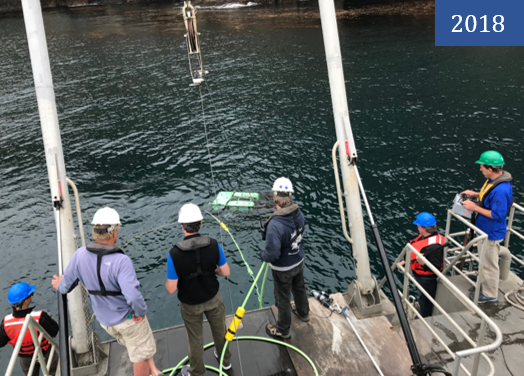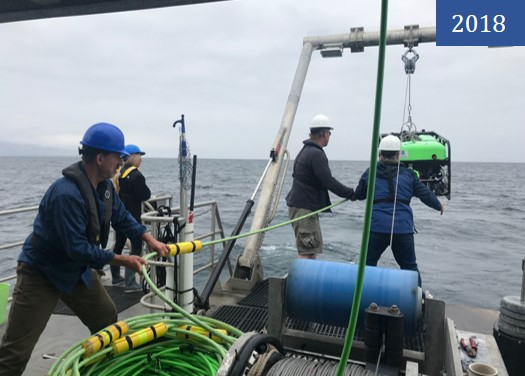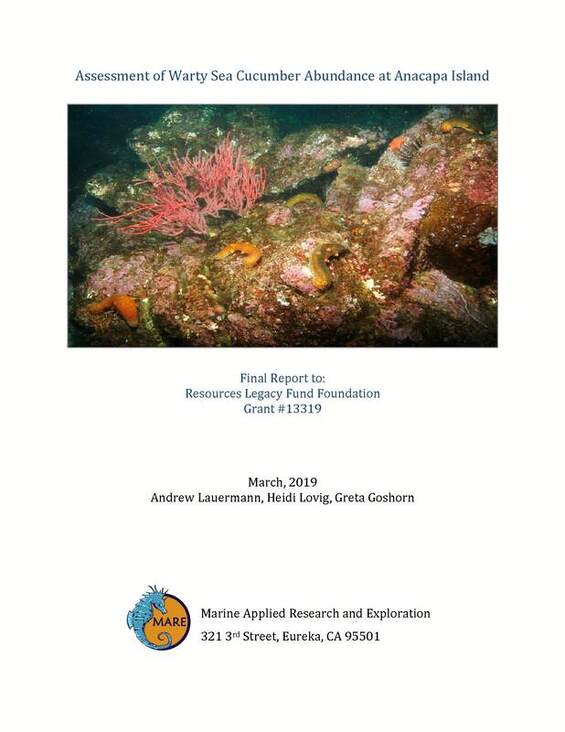WARTY SEA CUCUMBERS
Warty Sea Cucumbers
ANACAPA ISLAND FISHERY
BACKGROUND
SCUBA surveys conducted by the California Department of Fish and Wildlife (CDFW) and the National Parks Service have documented a differential in WSC densities inside and outside of the Anacapa Island State Marine Reserve (SMR), where WSCs were shown to be much less abundant outside of the SMR than inside (Schroeter et al., 2001, CDFW, 2007, State of California Fish and Game Commission, 2017). In addition, a seasonal differential was also documented, with the highest WSC densities observed during the spring spawning aggregations and the lowest densities occurring in the fall.
Anecdotal reports from the commercial dive fishery have suggested that WSCs undergo a seasonal migration from deep to shallow waters for spawning, but the degree to which WSCs utilize deeper waters remained unknown. To better understand the seasonal abundance inside and outside of the SMR and to examine seasonality of abundance deeper than SCUBA depths, MARE and CDFW conducted a 2-phase assessment around Anacapa Island in 2018.
Sampling was completed using MARE’s remotely operated vehicle, ROV Beagle. Two study sites were selected, one inside the protection of Anacapa Island SMR and one outside of the reserve that was subject to fishing. Each site was sampled during the spring and fall to capture both spawning and non-spawning seasons.
RESULTS
As expected, survey results showed that WSCs were more abundant at the SMR site than the fished during both survey seasons. No difference in depth distribution was observed between the seasons, and very few individuals were present in deeper areas (40-60 m) during both seasons. In addition, WSCs were less abundant (about 75%) in the fall than in the spring, at both the MPA and fished sites. These data suggest that there is no seasonal migration from deep-water habitats each spawning season. Further study is needed to understand the decrease in density each fall of WSCs in their shallow water habitats.
